Renault, a fully manufacturer-funded team, may have come across as underachievers in the last few seasons, but having retaken control of the ailing Lotus entity at the backend of 2015 it has had to go through a few growing pains.
Its withdrawal as a manufacturer at the end of the 2011 campaign had seen it fall into private ownership and although some success initially followed, the team lost key personnel and began to fall down the pecking order.
Renault went about a total overhaul of the Enstone operation over the last three years, with heavy investment in both infrastructure and the recruitment of new personnel.
In 2018 its efforts started to bear fruit, as the manufacturer usurped the upper midfield teams to clinch the currently coveted ‘best of the rest’ fourth position. Join us as we delve through the RS18’s 2018 technical image archive, and take a look at how it went about achieving that…
Renault R.S.18 S duct
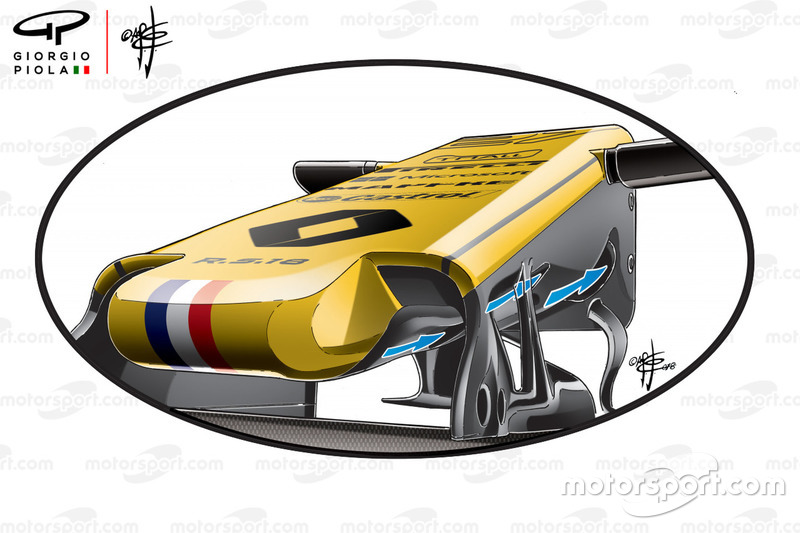
Photo by: Giorgio Piola
Having utilsed the traditional short-stack ‘S’-duct solution in previous years the team switched to the longer iteration for 2018 – a design made possible by various regulation changes in the last few seasons and used by other teams in recent years. The RS18’s elongated ‘S’-duct solution used several inlets to power the aerodynamic device, whilst you’ll also note that the front wing pillars featured a slot, a feature seen used by McLaren and Ferrari.
Renault Sport F1 Team R.S. 18 nose detail
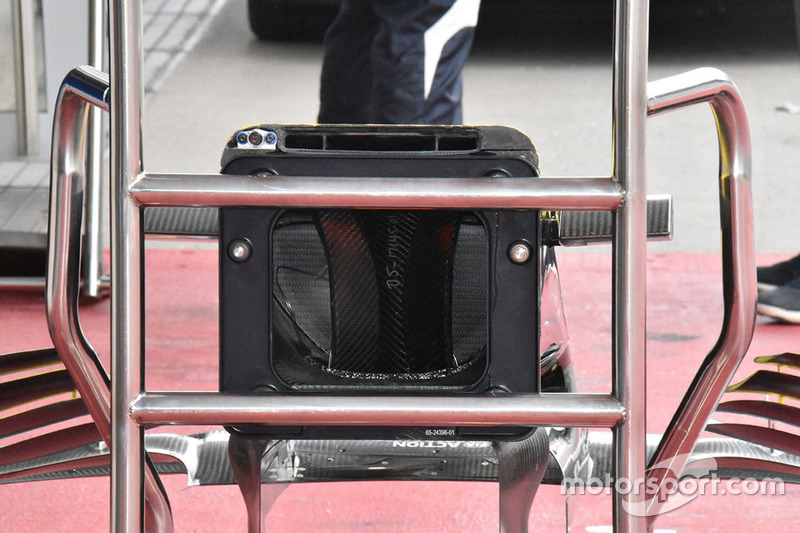
Photo by: Giorgio Piola
Here’s a look inside the nosecone, in order that you can see how that airflow is moved from underside to the upper surface of the chassis.
Renault R.S.18 front brake drum choices

Photo by: Giorgio Piola
When it comes to cooling the front brakes Renault had numerous options up its sleeves, the left iteration shows a short drum casing that fully exposes the disc, while on the right hand side is the enclosed version which includes crossover pipework.
Renault Sport F1 Team R.S. 18 rear wheel hub
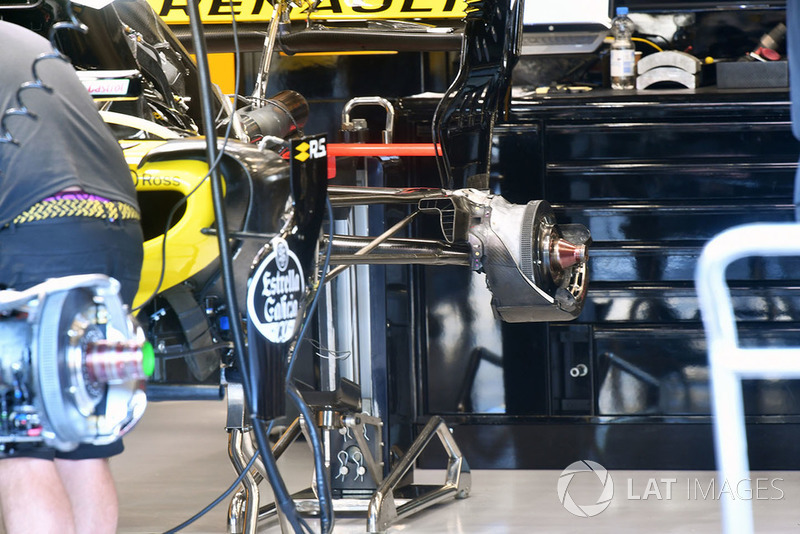
Photo by: Mark Sutton / Sutton Images
This shot of the RS18 in a state of undress allows us to appreciate the airflows pathway from the inlet to the rear brake caliper.
Renault Sport F1 Team R.S. 18 front suspension detail
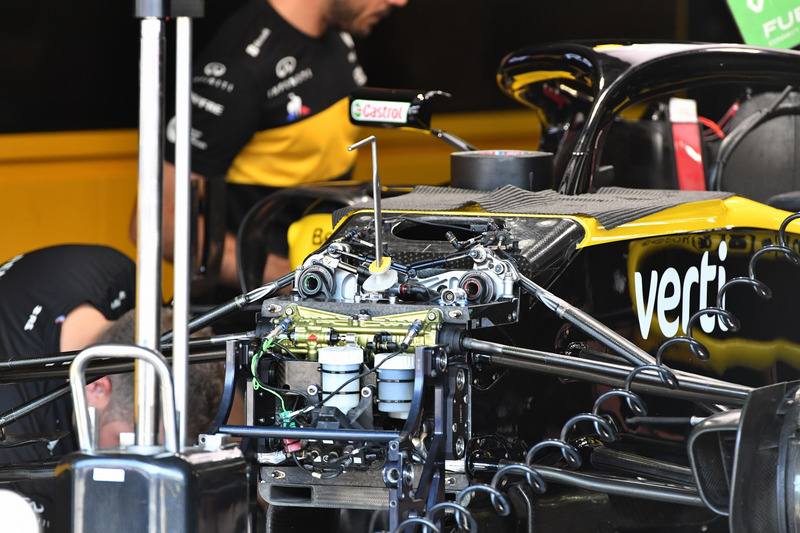
Photo by: Mark Sutton
A look under the skin of the front-end of the RS18, including the front suspension and brake cylinders.
Carlos Sainz Jr., Renault Sport F1 Team R.S. 18 detail front wing
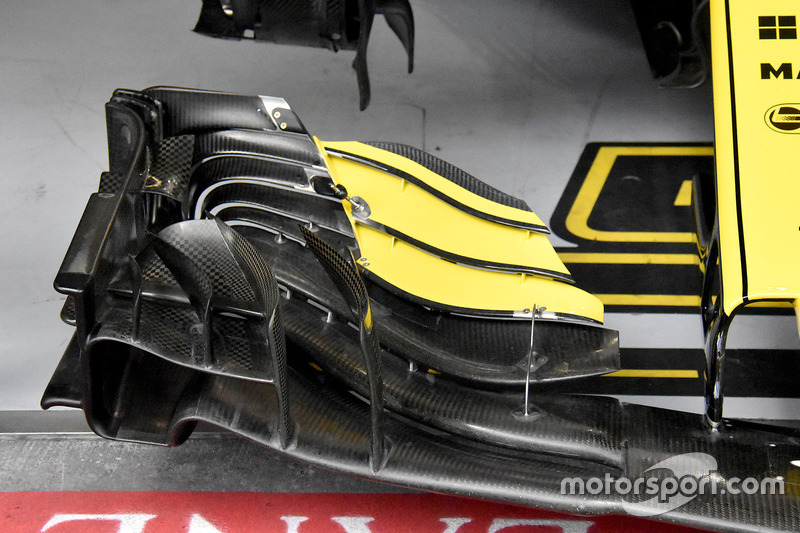
Photo by: Giorgio Piola
Renault started to play around with different front wing flap lengths and angles in the opening phase of the season, here’s one specification used in Austria on Carlos Sainz Jr’s car.
Nico Hulkenberg, Renault Sport F1 Team R.S. 18 detail front wing
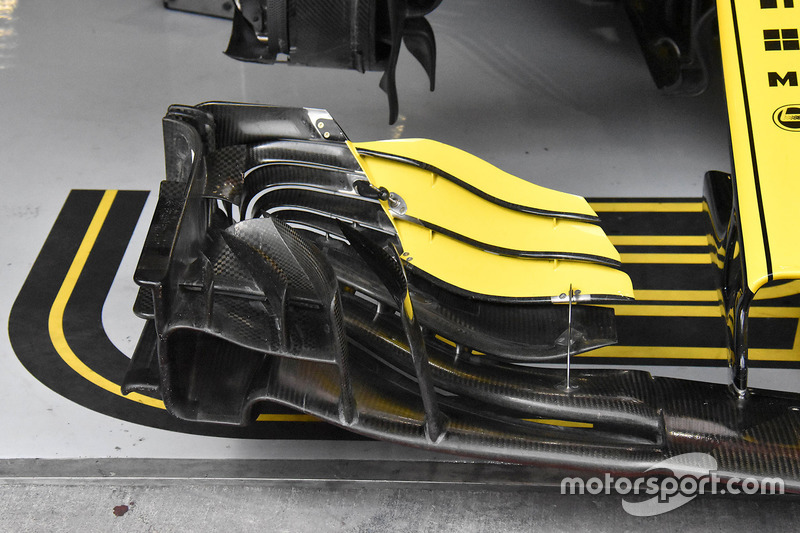
Photo by: Giorgio Piola
As a direct comparison here’s the wing used on Nico Hulkenberg’s car.
Renault Sport F1 Team R.S. 18 rear wing detail
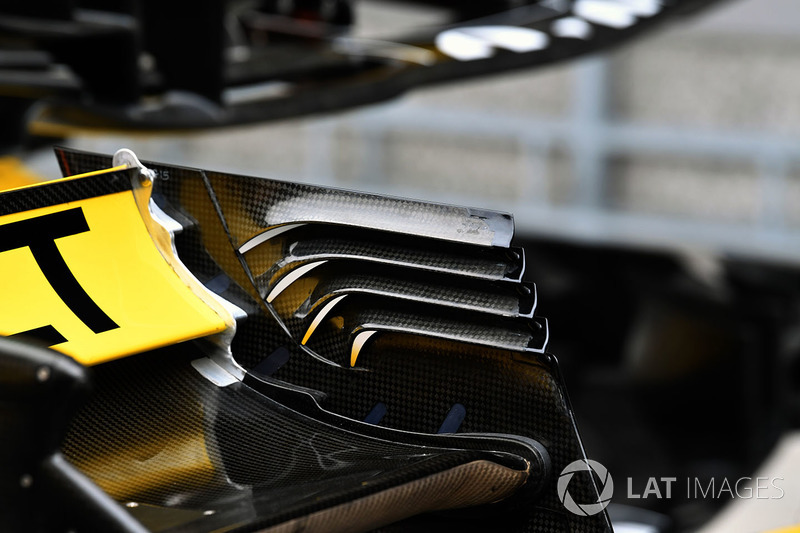
Photo by: Sutton Images
A close-up of Renault’s rear wing endplate louvres which feature the open-end style approach pioneered by Toro Rosso.
Renault Sport F1 Team RS 18 sidepods
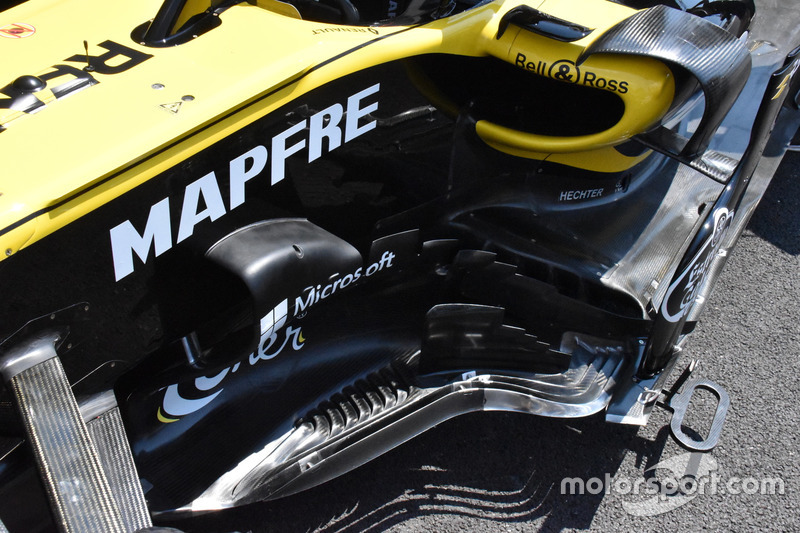
Photo by: Giorgio Piola
This shot of the updated bargeboards used by Renault from the Canadian GP shows just how detailed the footplate had become as a complex array of striations were used to manipulate the flow field.
Renault Sport F1 Team RS 18 side detail
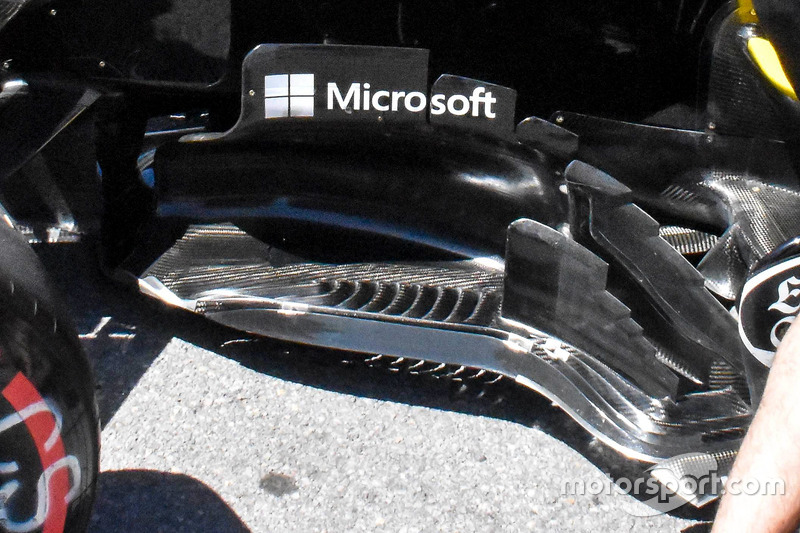
Photo by: Giorgio Piola
A close up of the previous specification bargeboards used by Renault up until the Canadian GP for comparison.
Renault Sport F1 Team RS 18 halo-mounted mirrors

Photo by: Giorgio Piola
The team also briefly tested some halo-mounted mirrors at the Canadian GP, as they looked set to follow in Ferrari’s footsteps.
Renault Sport F1 Team R.S. 18 front wing comparison

Photo by: Giorgio Piola
Renault introduced a new front wing concept at the Hungarian GP, which saw a much wider static section in the outboard section to help deal with shaping the wake generated by the front tyre. Revisions to the endplate and outboard footplate were also made to further solidify this effect, whilst the flap adjuster and the total area they cover was revised in order that the Y250 could be manipulated without too much overall loss. You’ll also note that the team varied the slot opening in the main plane, utilising a wedge to blank off a particular section when the need arose.
Renault F1 front wing detail
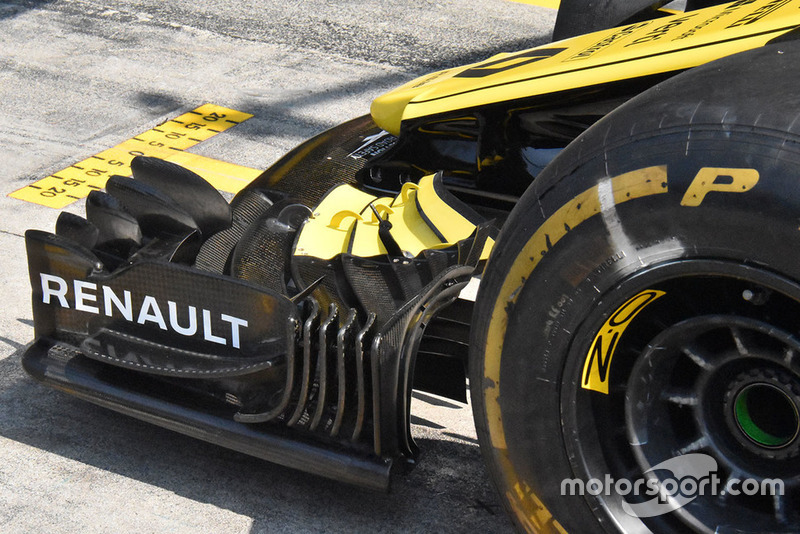
Photo by: Giorgio Piola
A side view of the endplate shows how the designers have split the rearmost surface up into multiple sections.
Renault Sport F1 Team R.S. 18 front wing detail
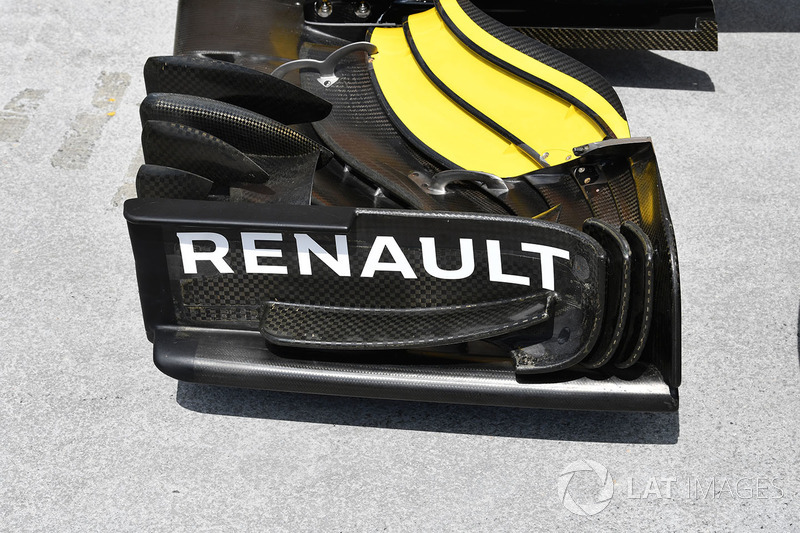
Photo by: Mark Sutton / Sutton Images
A comparison showing the older configuration with just two sections split off at the rear of the endplate.
Renault Sport F1 Team R.S. 18 rear floor detail
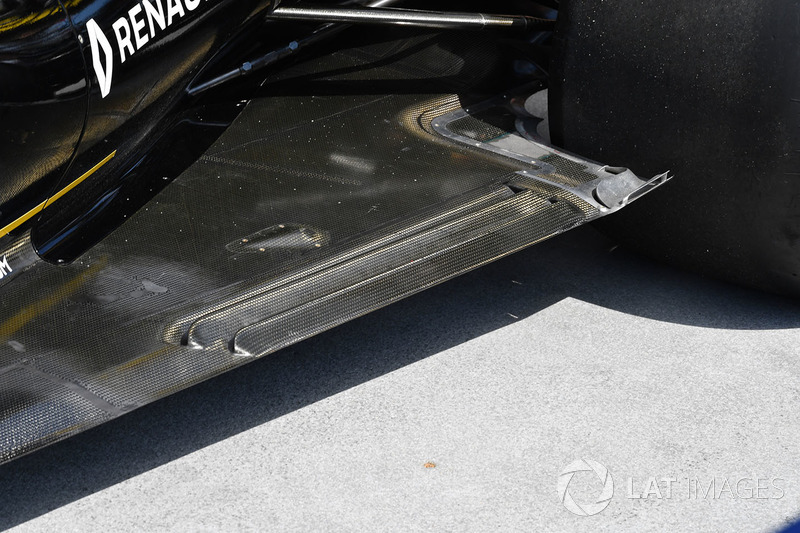
Photo by: Mark Sutton / Sutton Images
A look at the most up-to-date floor at the Hungarian GP which includes two elongated longitudinal slots parallel to the floors edge that became commonplace up and down the grid in 2018.
Renault Sport F1 Team R.S. 18 exhaust
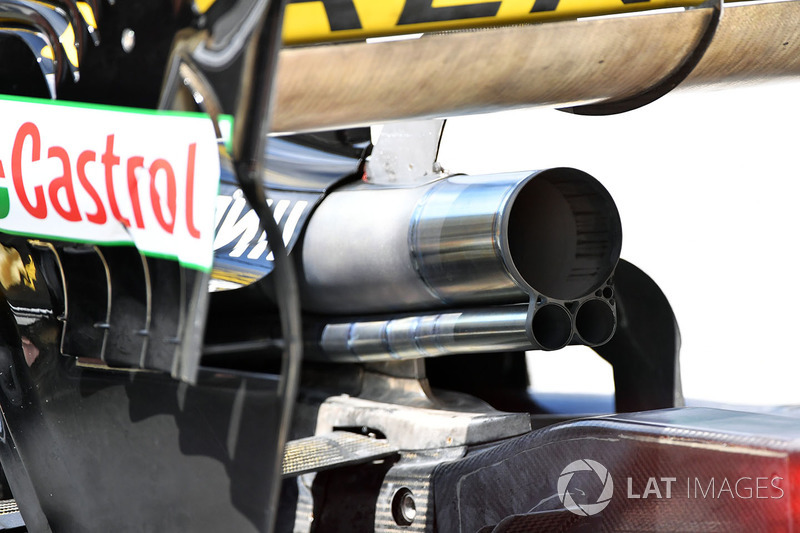
Photo by: Mark Sutton / Sutton Images
A close up of the RS18’s exhaust solution, which saw the main outlet mounted closer to the underside of the rear wing and shotgun style layout utilised for the wastegate outlets.
Renault Sport F1 Team R.S. 18 sidepod detail and aero sensor
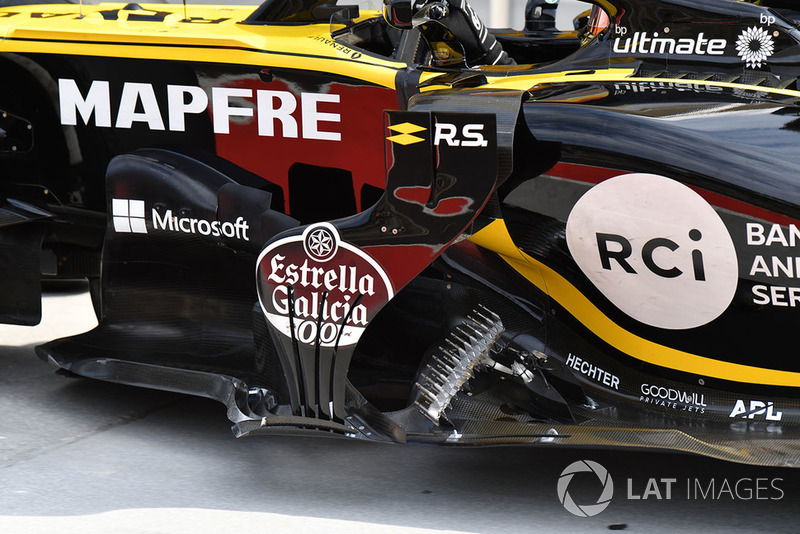
Photo by: Mark Sutton / Sutton Images
The team mounted this kiel probe array on the leading edge of the floor at the post GP test in Hungary as it evaluated how changes could be made to improve flow through to the diffuser.
Renault Sport F1 Team R.S. 18 rear wing

Photo by: Mark Sutton / Sutton Images
Renault’s rear wing in high downforce trim, complete with the McLaren style endplate strakes.
Renault Sport F1 Team RS 18 front wing detail
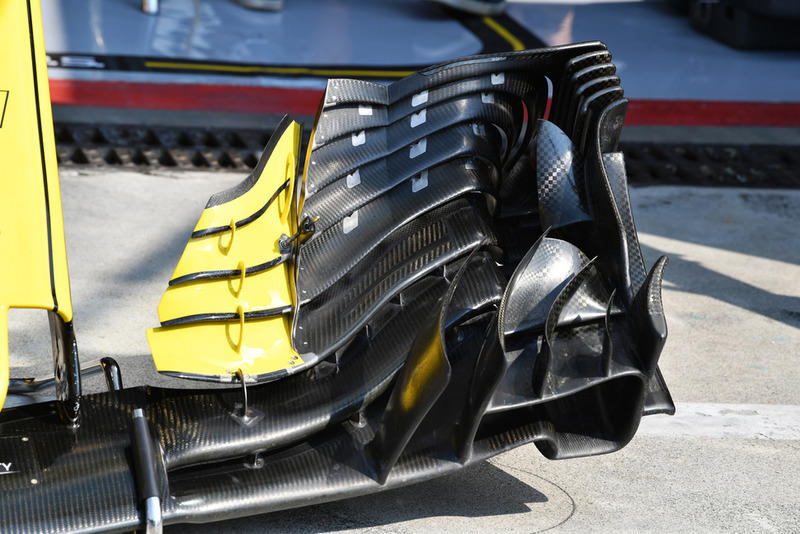
Photo by: Mark Sutton / Sutton Images
An overview of Renault’s latest specification front wing at the Italian GP shows how the team have moved to the more inboard flap adjuster.
Renault F1 rear wing detail at Monza

Photo by: Giorgio Piola
The team also had a very low downforce rear wing offering in Italy, which featured a spoon-style design.
Renault Sport F1 Team RS 18 nose and front wing
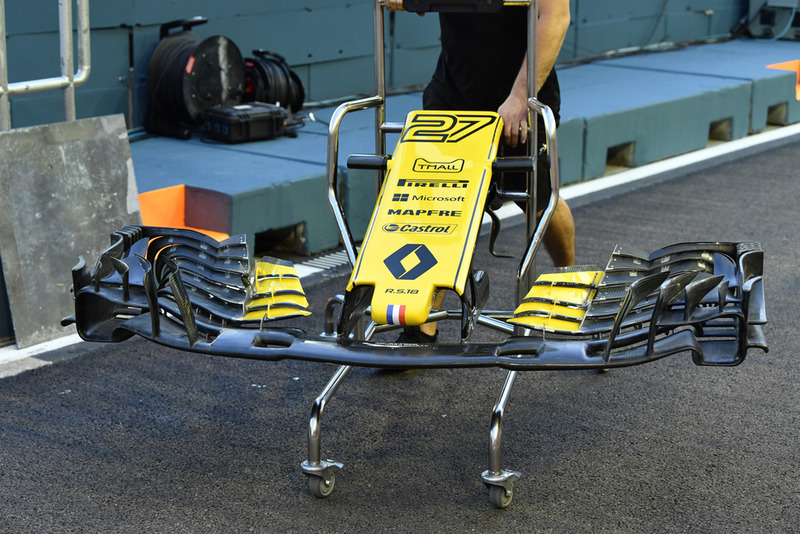
Photo by: Mark Sutton / Sutton Images
A mechanic wheels the team’s latest specification front wing down the pitlane in Singapore, note how a section has been put into the wing to divide the main plane slot.
Renault Sport F1 Team RS 18 front wing detail
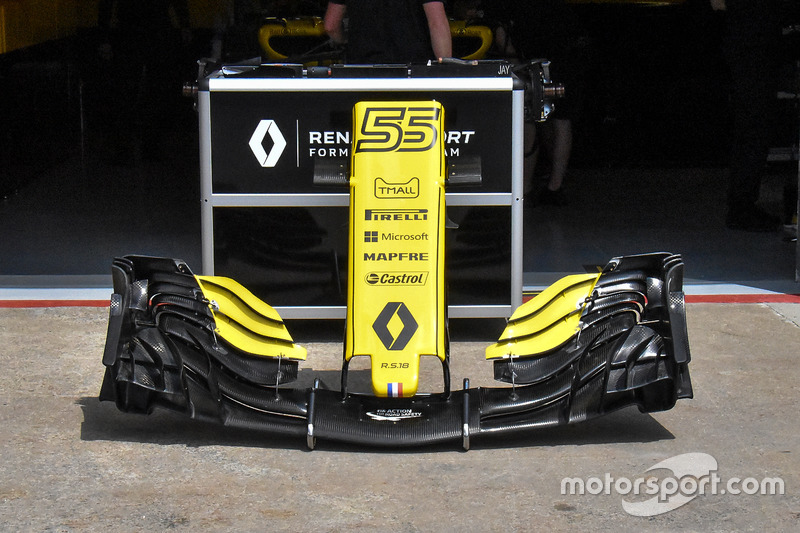
Photo by: Giorgio Piola
As a comparison here’s the older specification front wing, which features a more conventional adjuster position and longer flaps.
Renault R.S. 18 of Nico Hulkenberg technical detail
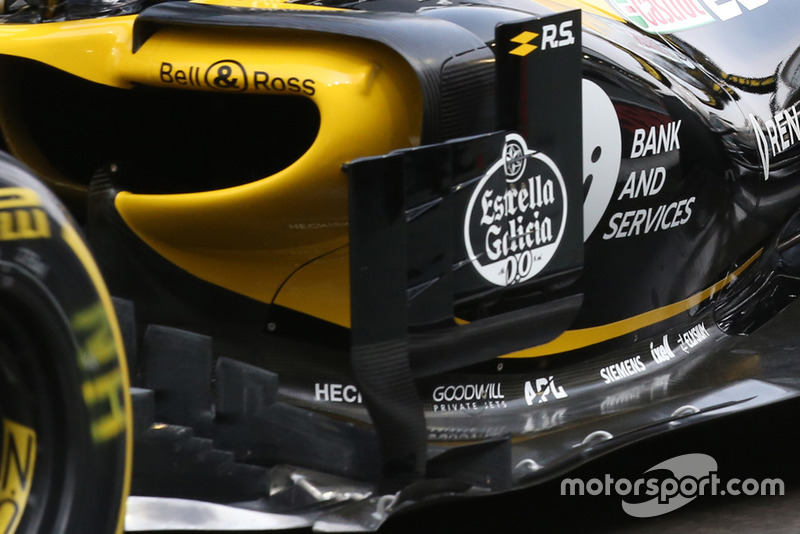
Photo by: Giorgio Piola
Renault introduced a new deflector panel in Singapore, reminiscent of the designs used elsewhere up and down the grid.
Renault Sport F1 Team mechanics with Renault Sport F1 Team R.S. 18 nose and front wing
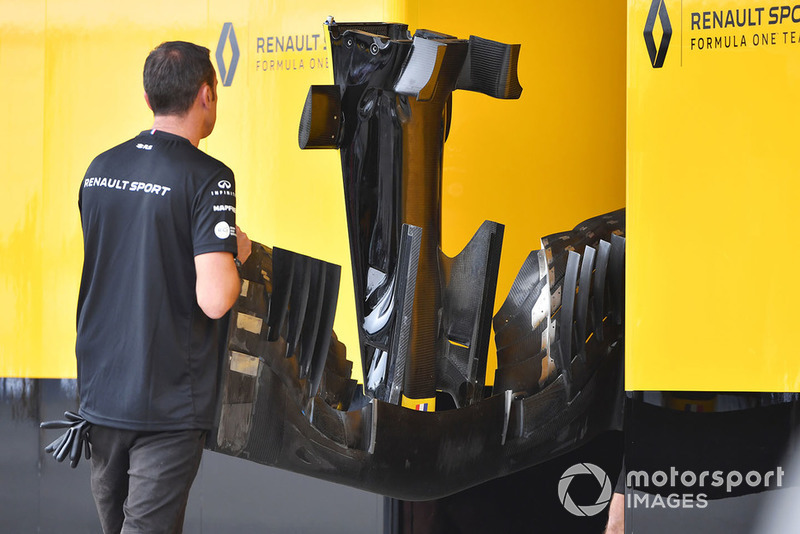
Photo by: Mark Sutton / Sutton Images
A rare glimpse of the underside of the front wing as the mechanics carry it into the garage at the Japanese GP.
Renault Sport F1 Team R.S. 18 detail
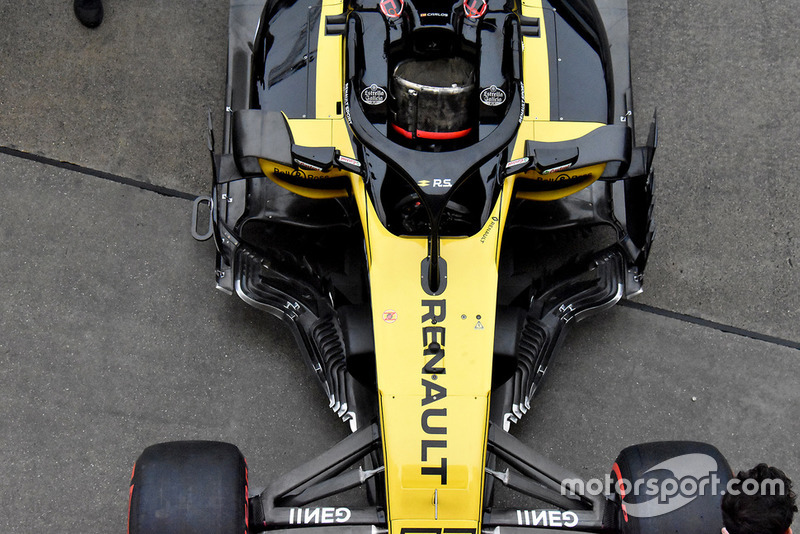
Photo by: Giorgio Piola
A fascinating overview of the RS18 taken by Giorgio in Japan.
Renault Sport F1 Team R.S. 18 front brake detail

Photo by: Giorgio Piola
The team ran a hybrid version of the front brake duct assembly in Mexico, as it installed the outer drum fairing but left the crossover pipework in the parts bin.
Source: Read Full Article
